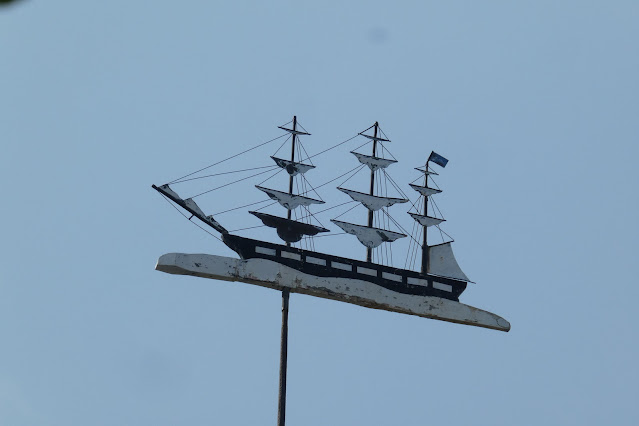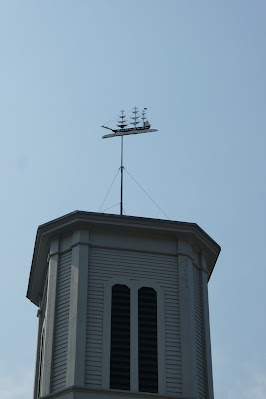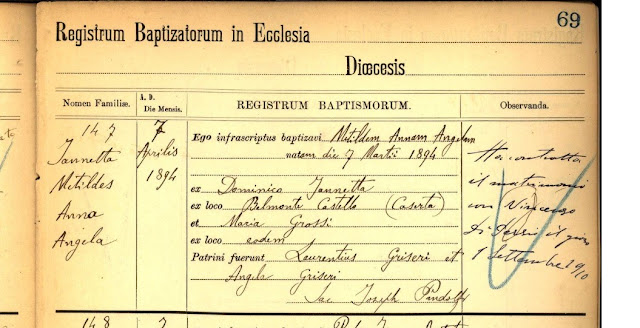 |
| September 14, 1900 Boston Evening Transcript page 4 |
Yesterday I posted a story from the September 1900 Boston Globe which had a colorful description of the Boston police department and my son-in-law's great-great grandfather, Dominic Ianetta (1865 - 1952), doing the semi-annual (March and September) inspection of street musicians in the Italian North End of Boston. Dominic Ianetta (also known as YANNETTA) was known as "The Hurdy Gurdy Man" of Boston, and he was helpful to the police inspectors during their examinations of the street musicians because he was born in Italy and spoke Italian. The Boston Globe article was very colorful in it's descriptions, and had a sketch of the street organs and their musicians being examined. It was also racist in tone. This article from the Boston Evening Transcript is a bit more level headed.
"POLICE GIVE A HURDY-GURDY PARTY
Annual "Try-Out" of Street Machines
Today in a Hall on Hanover Street
Proves Very Interesting
Between twenty and thirty Italians with their hurdy-gurdies, street pianos and hand-organs gathered in a hall on Hanover street this noon, and for two hours the people of that immediate section were treated to a feast of music that was unusual to some of them at least. This "hurdy-gurdy" party was given under the auspices of the Board of Police, although none of the commissioners personally was present, the concert being conducted by Special Officer George W. Patterson, who has charge of the itinerant musicians, assisted by D. Yanetta and Benetto Barlone, two expert tuners. there seems to be no one in the department who is qualified to pass on whether or not an instrument is in tune, so outside assistance has to be utilized.
The gathering today was due to the fact that the licenses for the coming year have just been granted this month, and every instrument played on the street has to be inspected and adjudged in tune before its owner or lessee can travel about with it. It was interesting to watch the players as they came forward at the word from Mr. Patterson to give a sample of the qualities of their instruments. Few were allowe dto play more than three or four bars, when the "tuner" either told them it was all right, or else to have the machine tuned before the next "try-out" occurred.
One aged Italian approached timidly with a handorgan, which, perhaps, in some period of the dim past might have been in tune. For an up-to-date, 1900, machine it would hardly do. The owner was told that if he sent the organ to New York it might possibly be put in shape so that it would pass muster, and when this statement was translated to the Italian his grief at the thought of the expense which he must incur in order to meet requirements was touching.
There was another son of Italy who came forward at the word of command as though he realized fully that he had a machine of which any owner might be proud. The tuner said that this hurdy-gury, made by Presarese, was the only one of the kind in Boston, and it certainly was a treat to listen to it after some of the others. Most of the music played is of the "ragtime" order, and the owners of the machines say that this particular class of music seems to appeal to the people generally rather than the music of a classical nature.
According to the present laws no monkeys are allowed with organs in the city limits, and some of the owners of these interesting little animals appeared very much disappointed when told that they must no carry their "friends" about with them any more. Mr. Patterson told them that if they wished to go outside the city limits it was no concern of his, but if they persisted in displaying the monkeys in boston, they (the owners, not the monkeys) would be taken into court.
The new forms of licenses differ from those issued before, in being printed in both English and Italian, so that no licensee can allege as an excuse for an infringement of his license that he could not understand its terms."
For the truly curious:
Previous blog posts about Dominic Ianetta, the "Hurdy Gurdy Man" of Boston:
"Street Organs, Hurdy Gurdies, and Dominic Ianetta of Boston 1900" March 29, 2022 https://nutfieldgenealogy.blogspot.com/2022/03/street-organs-hurdy-gurdies-and-dominic.html
"Little Musical Performers in Boston 1905" March 16, 2022
https://nutfieldgenealogy.blogspot.com/2022/03/little-musical-performers-in-boston-1905.html
--------------------
To Cite/Link to this blog post: Heather Wilkinson Rojo, "Boston Police Give a Hurdy Gurdy Party 14 September 1900", Nutfield Genealogy, posted 31 March 2022, ( https://nutfieldgenealogy.blogspot.com/2022/03/boston-police-give-hurdy-gurdy-party-14.html: accessed [access date]).















